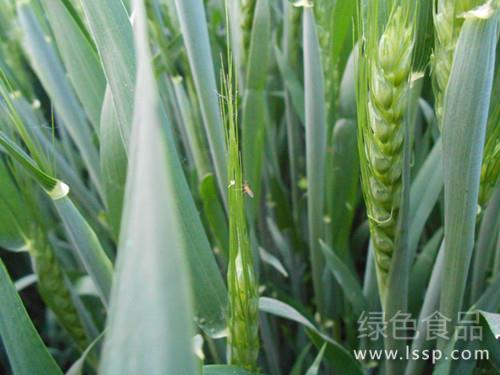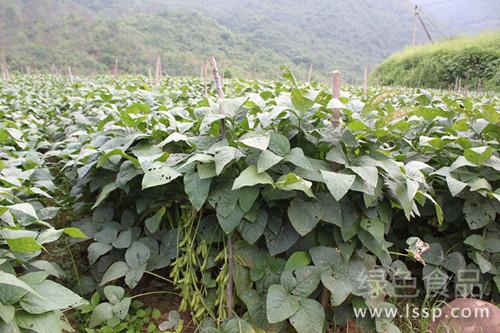Control methods of trematodes in wheat with destructive harm

Wheat midge
Characteristic of harm: destructive. Triticum aestivum belongs to the family Diptera. The larvae endanger the grains of filling wheat. The yield of one larva in the wheat grain was reduced by about 25%, the yield of two larvae was reduced by about 50%, and the yield of four larvae was cut off. Concealment. Wheat trematodes spend about 11 months a year in the soil, and the remaining month is feathering, spawning, hatching larvae and so on. The damage period of the larvae is about 20 days and is hidden in the filling wheat grains. Diapause, the conditions are not suitable for non-occurrence, even if the conditions are suitable, there are still some larvae do not pupate, so the population density in the soil increases year by year, and it is easy to break out in the year under suitable conditions.
Main points of monitoring: from mid to late March after wheat jointing, local representative wheat fields were selected, and each field was sampled at five diagonal points (10 cm × 10 cm × 20 cm), scoured, checked and counted. When there are 2 or more plasmodium in a single sample, it must be prevented and treated. Visual observation is generally used. In the adult stage, gently separate the wheat plants to both sides by hand and visually check the number of take-off worms. When the average number of traps is 10 times and there are 10-25 adults, chemical control is necessary.
The main points of prevention and control are mainly in the pupa stage and supplemented in the adult stage.
To control wheat trematodes, we should grasp the key period of control, that is, the use of drugs in the weak period of pests. The overwintering larvae of trematodes are deeply hidden in about 20cm soil. In the following spring, with the increase of air temperature, the pests pupate, and the pupae are generally stored at 3-5cm below the surface. The pupal stage is 8-12 days, the adult flies are not strong, they generally move among wheat plants, and the adult life span is about 3-5 days. The larvae endanger the wheat grains and enter the soil before harvest. From the perspective of the whole generation, the pupa stage is the weakest period, followed by the adult stage, so it follows the principle of "pupa stage control is the main, adult stage control is secondary".
Control time: 1. Control index: more than 2 plots in each square were used for pupa stage and adult stage control. Other wheat areas carry out adult stage control, as well as wheat aphids.
2. Control methods: equal attention should be paid to the pupa stage and the adult stage. The main results are as follows: (1) Prevention and control of pupa stage: spreading poison to kill pupae. It is better to be early than late when it is conducted 5 days before wheat heading (April 24-30). Use medicament: 500ml 40% chlorpyrifos EC (add proper amount of water) or 2 kg 3% methyl isophosphates granules, and 20 kg fine sand, mix evenly, prepare poisonous soil, spread the surface evenly along wheat ridge in the afternoon (be careful not to sprinkle it on leaves), sprinkle poisonous soil after watering, can improve the efficacy. (2) Adult stage control: field spray. It was carried out after wheat heading and before flowering (May 2-7), and wheat aphids were also treated. Use medicament: 30ml 2.5% cyhalothrin EC + 20g 10% imidacloprid wettable powder. Prevention and control is usually carried out on windless days before 9 o'clock in the morning or after 5 o'clock in the evening. The spray should be sprayed thoroughly to effectively control the number of adults and the number of eggs laid by trematodes.
Points for attention: (1) the time requirement for the control of trematodes is strict, and if we miss the critical period, we will not be able to achieve the purpose of prevention and control, so we hope that the majority of wheat farmers will seize the opportunity and use medicine in a timely manner to fight well in the prevention and control of trematodes, so as to ensure a high yield and bumper harvest of wheat. (2) pay attention to the safety of drug use, and necessary protective measures should be taken to avoid poisoning.
- Prev

Less pods and less seeds affect the yield of edamame bean in early spring
Less pods and less seeds affect the yield of edamame bean in early spring
- Next

Prevention and control of common diseases and insect pests of flowers in spring
There are many diseases and insect pests of flowers in spring, and the more serious ones are the following.
Related
- Fuxing push coffee new agricultural production and marketing class: lack of small-scale processing plants
- Jujube rice field leisure farm deep ploughing Yilan for five years to create a space for organic food and play
- Nongyu Farm-A trial of organic papaya for brave women with advanced technology
- Four points for attention in the prevention and control of diseases and insect pests of edible fungi
- How to add nutrient solution to Edible Fungi
- Is there any good way to control edible fungus mites?
- Open Inoculation Technology of Edible Fungi
- Is there any clever way to use fertilizer for edible fungus in winter?
- What agents are used to kill the pathogens of edible fungi in the mushroom shed?
- Rapid drying of Edible Fungi

